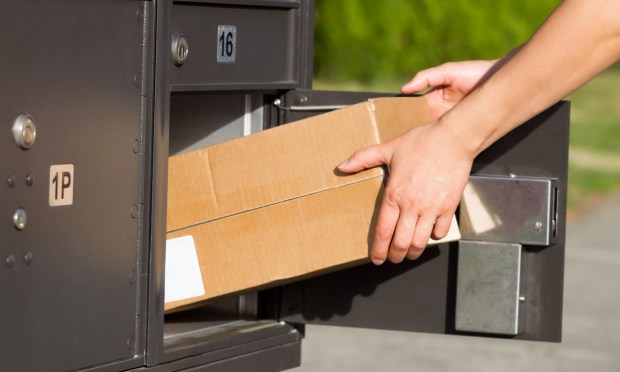Mailboxes Get Smart With AI to Smooth Last-Mile Delivery

An estimated 1.7 million packages are stolen each day in the U.S.
And that number spikes around eCommerce events and major holidays, representing billions of dollars lost to “porch pirates” each year.
“They came up with the mailbox in 1858 because they needed to protect goods from weather, vandalism, and theft. Fast forward to today, and we need even more safety and security than we did back then,” Dan O’Toole, chairman and CEO of Mailbox-as-a-Service company Arrive, told PYMNTS.
As pandemic-fueled behaviors around online shopping and expectations of convenient, frictionless commerce experiences continue to snowball, more and more packages are arriving at homes and businesses.
Package theft is regarded as a challenging crime to solve, and a significant number of package theft incidents remain unresolved — with many delivery companies and merchants simply refunding or replacing the stolen goods when their customers report the loss, a Band-Aid approach that impacts the entire supply chain.
O’Toole explained that in a mid-market city like Fort Wayne, Indiana, UPS alone is delivering to 8,000 more unique locations on average than they did three years ago.
“There is huge stress on last-mile logistics, and the mailbox hasn’t been disrupted since 1858. It’s time for the mailbox to catch up to where the cell phone is. There are smart cars and smart homes now — people need a smart, secure mailbox,” he said.
That’s why his firm’s objective is to transform the mailbox into a service that can prevent package theft by leveraging artificial intelligence (AI) and machine learning (ML) technologies.
Convenience and Safety
It isn’t just visibly branded eCommerce packages that go missing. Crucial business and medical supplies, and even food delivery orders, can tempt a porch pirate.
An estimated 79%, or nearly 8 in every 10 Americans, were victims of delivery theft in 2022.
As the world becomes increasingly connected and powered by digital convenience, those shipments are going to need a secure place to be deposited.
“The ability to reduce the 60 hours a year, on average, that consumers reportedly spend shopping for groceries is a big part of the friction/time value proposition that has helped [food delivery services] scale,” PYMNTS CEO Karen Webster wrote in August. “Many consumers are willing to trade the value of their time for the cost of the delivery fee.”
Supporting this, PYMNTS Intelligence in the report “12 Months of the ConnectedEconomy™: 33,000 Consumers on Digital’s Role in Their Everyday Lives,” which drew from surveys of tens of thousands of U.S. consumers, revealed that 40% of consumers had ordered groceries online for home delivery, while 34% had used a same-day delivery site.
“It’s a non-starter to be thinking about autonomous delivery in any fashion without a safe, secure box in that ecosystem,” O’Toole said.
An Evolving Delivery Ecosystem
As the ways that consumers and businesses shop continue to evolve, the methods by which merchants, retailers and commercial partners ship them their goods are undergoing a similar transformation.
“We’re envisioning delivery from conventional carriers, mail, U.S. mail, robotic delivery, unmanned driverless vehicles, and aerial drone delivery,” O’Toole said.
These advancements in last-mile delivery open up a world of possibilities, from high-rise balcony drone deliveries to neighborhood blanket coverage, package towers in multi-family buildings, and even mobile units for boats, campers and commercial vehicles.
“What if a tradesman on a project runs out of painting roller covers? Typically, they have to leave the job site and are gone for a couple of hours. With a connected mailboxes embedded in his commercial vehicle, that same tradesman could order through, for example his Sherwin Williams app, and have that product delivered to the site seamlessly and directly without ever having to stop working,” O’Toole explained.
He added that the rapid advance of today’s technical innovations creates new use-cases for a connected ecosystem anchored by a smart mailbox on a near-daily basis.
“Predictive delivery, route optimization, order personalization, curated weather reports, facial recognition for amber alerts or even missing pets, the list of use cases is endless — it goes far beyond what we can imagine today,” O’Toole said. “This little piece of real estate, the mailbox, is a gateway to every home and business throughout the world.”

